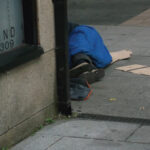Supporting parents who use substances: Are the children to remain unseen and not heard?
Catherine Comiskey is a Professor in Healthcare Statistics at the School of Nursing and Midwifery, Trinity College Dublin, The University of Dublin, Ireland. She is the academic expert member of the National Oversight Committee for the implementation of the National Drug Strategy and Vice Chair of the Scientific Committee of the EU’s, European Monitoring Centre for Drugs and Drug Addiction.
Recently I read about the shocking increase in deaths among people who use drugs in Scotland and as a mother myself all I could think about was the distress of the people, their families and their children. Children of people who use substances often go unseen and unheard, perhaps this is a legacy of our past but it need not be the legacy of our future.
Very little is known about the numbers of people who use substances and have children. A few years ago, before it was abolished the National Advisory Committee on Drugs and Alcohol (NACDA) attempted to answer this but no national estimates on the number of these children was ever published. My colleague Karen Galligan and I attempted to address this in one local and one regional Drug and Alcohol Task Force Area in Ireland. From our work with parents who use drugs along with drug, alcohol and children’s service providers, we estimated that for every adult known to services there was approximately one child. We know that in Ireland we have around 20,000 people across the country who are using opiates and who may or may not be in some form of treatment. What do we know about their potentially 20,000 children? What are their lives like and what does their future hold? How do their parents feel, are their children living with them, how are they coping with the strains of parenthood, the usual back to school pressures while living life as a person who uses opiates?
There is no denying that there are risk and protective factors for the children of parents who use drugs. I recently watched the comedian Tommy Tiernan interview the brilliant Irish actor Barry Keoghan who first appeared in the drama series Love/Hate. Barry’s mother died of a heroin overdose when he was 12 years old and Barry and his brother were raised by his maternal grandmother, an aunt and 12 foster homes. What protected this family and enabled such talent? Was it extended family, was it school or was it community and society who supported and protected them? According to Barry in his interview with Tommy, he loved drama but school banned him for ‘messing about.’ Barry held no regrets or anger which was admirable. Last year while researching this topic I had the privilege of interviewing another young man, a father of two small children. This man was the child of parents who used drugs. He had a very difficult childhood, trying to cope with the poor mental health and ultimate suicide of his father, the substance use of his mother and her family and at the age of only nine, trying to feed his younger brothers and sisters before they went to school. This man unlike Barry, did not escape the ravages of intergenerational substance use. In order to try and cope with the pressure and responsibility that stems from such tragedy, he began to use heroin.
As a society, what are we doing to support and protect these children and their parents? Our National Drug Strategy has rightly taken a harm reduction, health-led response to this challenge but a strategy is only a statement of intent and unless implemented it is all but useless. When a strategy commits to opening a safe place for people and parents who inject drugs and yet obstructs and delays that opening, what is the impact on the children and what does it say of us as a society? When a strategy says it will look at opening school buildings after hours for the benefit of disadvantaged communities and then delays that process, what does it say of us, our educational system and its mission? When a strategy says it will address the potential hidden harms to children of parents who use drugs but does not know the number of children that may be impacted, what does it say about our legacy of children being seen and not heard? And as a strategy which aims to reduce harm and support recovery what does it say about us when we have failed to do the research to find out how best to invest in that recovery and learn what works and what does not work?
These are difficult debates, we have had them in the media and at the policy table. The time for debating is over. We have, in my opinion, a good National Drug Strategy and a strategic statement on hidden harms. The strategy was developed not only by government departments but by voluntary, community, family and service user organisations. It is a strategy that was informed by the research evidence. We need now to progress this, to invest in its implementation and as a critical part of this to support parents who use substances and their children.
Professor Catherine Comiskey is author of, ‘Addiction Debates: Hot Topics from Policy to Practice’, published by SAGE United Kingdom, October 2019.
You can follow Catherine on Twitter @comiskeycath or on her personal blog.
[su_divider]Oops! We could not locate your form.

